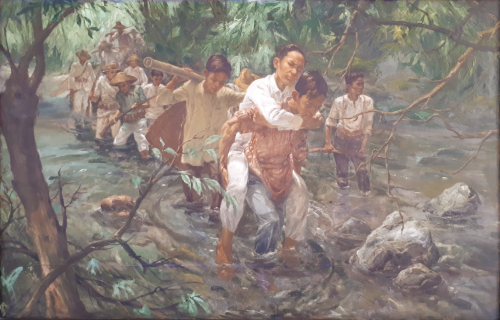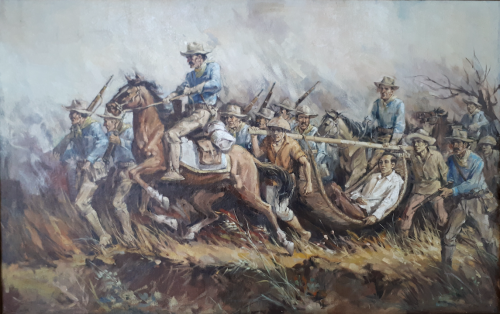While being the architect of the vast bureaucracy that made up the very first republic in Asia and a small network of ambassadors who sought to get for the First Philippine Republic an international recognition, Apolinario Mabini’s passion, ultimately, was Law.
Very few people know this of him. From the moment he stepped into the limelight of history, though it might appear to us that he was inconsistent in his views, this is because the only consistent thing about him was his fidelity with the Law. And that was why, among the leaders of that defunct Republic, no one can fit Mabini into a box of partisanship, not even in that overused tag of “Sublime Paralytic.”
It was no less than Nick Joaquin, National Artist for Literature, who said this of Mabini:
“His was a legal mind. He was interested in law as an idea, as an ideal, but not as a profession. He was never what we would call a practicing lawyer. Though he joined the Guild of Lawyers after graduation, he continued to work in the office of a notary public, set up no office of his own. But law was his life, his true love, and whenever he appears in our history he is arguing a question of legality.”
From the moment that he questioned the legal basis of the Proclamation of Independence, which was drafted by a few military men (which Mabini mitigated by having it quickly ratified by some representatives of liberated towns), to his hesitant taking of an oath of allegiance to the United States flag at the near end of his life, Mabini was always on the side of what was fair to all, and what the voice of the people clearly indicated. Almost unfeeling, and almost stoic, Mabini’s legal mind seen in all his correspondences to the Malolos Congress, President Emilio Aguinaldo, the American media, and the American generals, was a wonder to behold.

“Kakang Pule” (1964) by Rudy Herrera, Oil on canvas, 120 cm x 188 cm. Displayed at the Museo ni Apolinario Mabini in Tanauan, Batangas, it depicts how townspeople carried him from one town to another, when he was asked by Aguinaldo to be his adviser in June 1898.
Hence it wasn’t surprising that, as provided by the Malolos Constitution of 1899, Mabini was the only obvious choice to head the fledgling republic’s Supreme Court. The Constitution provided the following stipulation:
El Presidente de la Corte Suprema de Justicia y el Procurador General serán nombrados por la Asamblea Nacional en concurrencia con el Presidente de la República y Secretario de Gobierno, y tendrá absoluta independencia de los poderes legislativo y ejecutivo.
“The President of the Supreme Court of Justice and the Solicitor General shall be appointed by the National Assembly with the concurrence of the President of the Republic and the Secretaries of Government, and shall have absolute independence from the legislative and executive branches.” (Article 20)
The Constitution gave enormous powers to Congress (unlike our modern-day Constitution that gives almost the same, if not much more, weight of power to the President), and hence, the selection of the Chief Justice (President of the Supreme Court) was at the mercy of Congress. But here’s the thing—since the conceptualization of the said Constitution in September 1898, Mabini always managed to ruffle some feathers among the assemblymen because of his unmoving and uncompromising faithfulness to the law, which for him should be practical to the needs of the people at war, and one that is fair. When Mabini became the head of the Aguinaldo Cabinet in January 1899, his clashes with some members of the Malolos Congress who have vested interest only intensified, evidenced by the spread of the black propaganda against him, linking his inability to walk with syphilis, when in reality, he was suffering from polio. Mabini and the Cabinet members he lead, eventually resigned on 3 May 1899, to give way to the new Aguinaldo Cabinet led by Pedro Paterno, who proposed the American offer of autonomy instead of independence. Autonomy contradicted the very idea of independence as enshrined in the Constitution that these same leaders ironically approved and ratified.
It was clear to Mabini that a faithful justice of the Supreme Court required an independent and uncompromising loyalty to the Constitution, a sacred document of agreement between the leaders and those they govern. That was why he was happy upon learning that on 23 August 1899, amidst the raging Philippine-American War, President Aguinaldo recommended formally to Congress that his pick for Chief Justice was none other than Mabini. He was elected to the position. Based on the letters and correspondences, Mabini was at first, elated. He pushed for the publication of his plans for the organizational structure of the Judiciary suited to the times through his article “Supreme Court of Justice” in the news organ, La Independencia, before he could be limited by the position he would assume. He called this privileged position as “being entrusted to me” which “shall give me some political significance.”
The elation was soon changed into discouragement. In a letter to Teodoro Sandiko on 31 August 1899, Mabini said he was still waiting for the “official communication” of the appointment, not yet having an assurance “whether this is true.” He even noted that Paterno and Bautista must have been “vexed as they dislike me thoroughly.” He continues:
“They believe that I am forming a political faction, since they accuse me of everything, when in fact, I am opposed to political factions. I shall be, yes, a partisan of the people, and nothing more.”
Spoken like a true magistrate, impartial in judgment, and siding only with the truth.
The next day, his article in La Independencia got a scathing response from a certain “Zerzarian”, who questioned Mabini’s competence due to his disability. It turned out that this was Ambrosio Rianzares Bautista (He calls him Tio Bosiong). Mabini’s letter to his friends in Hong Kong described the situation, and the politics of his appointment in great detail:
“The Council of Government [Paterno Cabinet] backed by Tio Bosiong, the actual President of Congress [Speaker], and Ferrer, oppose my appointment tenaciously. It is being said that they are working hard to annul my election on the ground of physical disability and, for this reason, I have not yet been informed of my election. But I do not know if they would succeed, because “Puno” appears to be firm in his wish that I be the one to occupy that position. It is also being said that Paterno, is set on being elected to the post because he sees that “Puno” does not have much confidence in him and he may lose his position any time; that is why he wants to insure an honorable exit. Besides, if these people did not like me before, they like me less now that I have published articles describing graphically some errors and blunders that, in my opinion, would be fatal unless they are corrected.You know well that I am often harsh in my language, and besides, I purposely called aloud to make sure that I would be heard. ”
- Mabini to Messrs. Kanoy and Ikkis in Hong Kong
(Rosales, Pangasinan, 13 September 1899)
In a reply published by the newspapers on 19 September 1899, the classic Mabini replies to Zerzarian:
“Is the president of the Supreme Court a messenger who must walk constantly? No? Then a man without legs can hold the post, so long as he has the head and the hands suited to the task.”
If history turned out differently, we would have had a fearless legal mind like Mabini for our first Chief Justice. But it wasn’t meant to be.
On 10 December 1899, he was captured by the Americans.

“The Capture and Transfer of Apolinario Mabini” (1964) by Angel Cacnio, Oil on canvas, 120 cm. x 180 cm. Displayed at the Museo ni Apolinario Mabini, Tanauan, Batangas.
The day after, headlines in some American newspapers came out. Wichita Daily Eagle reads, “Insurrection’s Brains, Captured,” while New York Tribune called Mabini, “The Head and Front of the Insurrection.”
Look at that candidate for Chief Justice. What an honor given to him, even by his enemies! But as history always goes, we rarely put qualified people in such positions of power.
56 Notes/ Hide
cberzuela liked this
wrathdiwa liked this
federersroger liked this
 ladesaparecido reblogged this from indiohistorian
ladesaparecido reblogged this from indiohistorian  ladesaparecido liked this
ladesaparecido liked this intousecretacc liked this
marthielsmain liked this
 pagetwister liked this
pagetwister liked this  zan-the-second liked this
zan-the-second liked this getas-regina liked this
 00-30d liked this
00-30d liked this brenli liked this
helios-studio liked this
 galactic-polywag reblogged this from morgan-molliniere
galactic-polywag reblogged this from morgan-molliniere  wantustepp liked this
wantustepp liked this hornbookrule liked this
dresmera liked this
jeffreybower reblogged this from indiohistorian
yasu-gyaru reblogged this from indiohistorian
painted-in-blood liked this
beauinparanoia liked this
 markedbyfireandash reblogged this from ranichi17
markedbyfireandash reblogged this from ranichi17 yasu-gyaru liked this
gaak-sik-a liked this
 womanlalaboy liked this
womanlalaboy liked this wherenightmaresroost reblogged this from ranichi17
zerosai reblogged this from morgan-molliniere
fntsticbizarre reblogged this from indiohistorian
fntsticbizarre liked this
 galactic-polywag liked this
galactic-polywag liked this versailles-fairytale liked this
 lelouchootori liked this
lelouchootori liked this actualcartoonmouse reblogged this from indiohistorian
actualcartoonmouse liked this
savedbytherock liked this
hypatheticallyspeaking reblogged this from indiohistorian
hypatheticallyspeaking liked this
 shirororororo liked this
shirororororo liked this  nablah reblogged this from indiohistorian
nablah reblogged this from indiohistorian  nablah liked this
nablah liked this yakisabajanai liked this
markinverse liked this
 ranichi17 reblogged this from indiohistorian
ranichi17 reblogged this from indiohistorian - Show more notes








